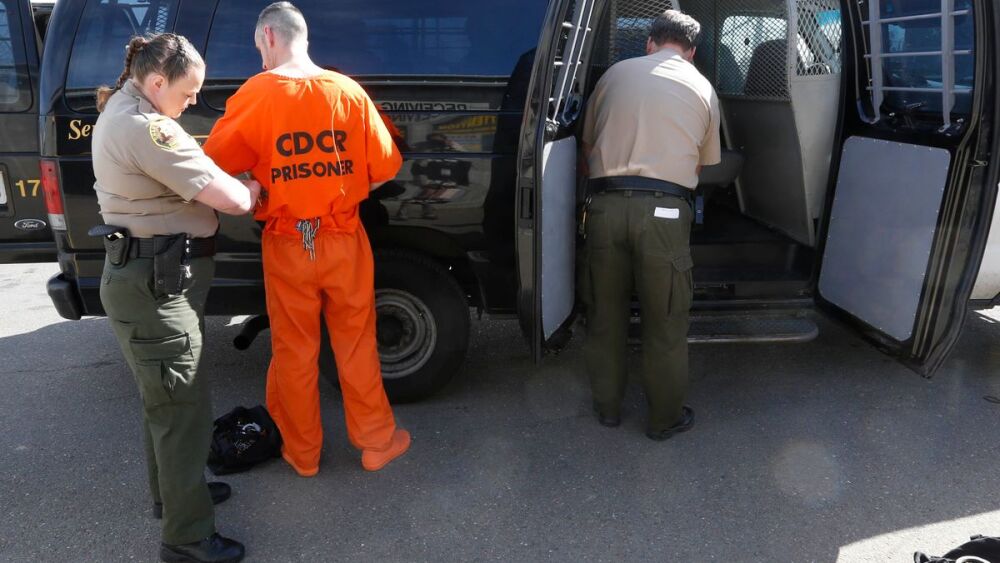Editor’s note: Video technology is impacting every facet of modern-day life, shaping the delivery of education and training, transforming how we communicate with each other, and advancing surveillance and security. This special coverage series, Video in Corrections: How Technology is Transforming Prison & Jail Operations, takes an in-depth look at how correctional facilities can use video to improve both operational efficiency and officer and inmate health and safety.
Safe and secure inmate transportation is no easy task; however, it is a necessity for correctional institutions. Not only must correctional officers ensure their own safety, but also that of the public during the journey.
In the current societal climate where law enforcement is being held under the microscope, a vehicle video surveillance system can alleviate officers and agencies of any liability in the midst of an unpredictable incident.
Much like body-worn cameras, the use of inmate transportation vehicle cameras can keep agencies ahead of the curve in preventing liability in the event of injury to officer or inmate.
Video systems can be easily installed to increase safety and security in vehicles such as transport vans, transport buses, high value inmate transport vehicles (HVIT) and high-risk inmate transport vehicles (HRIST). Transportation vehicle security video systems can provide verifiable evidence if required for any circumstance including admission for court proceedings or even for agency training exercise purposes.
Installation of a video camera surveillance system inside correctional transportation vehicles can reduce vulnerability and security risks while assuring behavioral accountability for correctional officers and providing an additional layer of security.
Benefits of transportation surveillance include:
- Transportation surveillance systems are vital for secure transportation of inmates to and from correctional facilities. The consistent presence of cameras helps officers spot suspicious inmate activity when they are not physically present to help improve correctional officer safety.
- The presence of video cameras works to deter violent behavior and reduce inmate fighting, while providing important physical evidence should an incident occur.
- The presence of video cameras inside transportation vehicles can help add an additional layer of security for a correctional facility as it may deter inmates from smuggling drugs or other contraband into facilities from the outside.
- Transportation video surveillance systems offer the simplicity of digital technology for storing footage for potential future reference. Accessing digital files on agency databases or cloud server is user friendly without taking up physical storage space for cumbersome video tapes.
There are a couple of risk factors to consider during the evaluation process while considering the purchase of an inmate transportation video surveillance system.
- Public privacy rights remain a continual issue in video surveillance for law enforcement agencies. Thorough research and adherence to agency policies should be taken into consideration when deciding on a system purchase and camera placement.
- Inmate tampering is always a possibility. Inmates have 24 hours a day to ponder how to access the camera parts and electrical wires and how they can utilize them. When researching camera systems, remain mindful of how to keep camera units secure and tamper resistant when mounted.
Options for video system configuration
Transportation video systems can be purchased and customized to the unique configuration of each correctional vehicle.
Systems can be designed with signals that are routed to a single command center where monitors provide real-time images. The system can be configured with or without alarm buttons that send text or email message alerts with images in the event officers have no radio capabilities. The system can also be designed to upon alert, immediately align camera focus on the specific vehicle in which the panic alarm has been activated by officers.
Transportation video surveillance systems also offer the capacity to provide remote wireless access to real-time video images. Images are accessible to officers from remote location log in via the internet. Some systems are programmed to begin recording capabilities upon detail dispatch. With options such as these, transportation video surveillance systems can offer some of the most superior security measures available in the correctional industry.
Prisons and correctional facilities heavily utilize inmate surveillance systems. Installation of a transportation surveillance system is a natural expansion for additional safety and security measures for both inmates and officers. A video surveillance system loaded in each transportation vehicle is an excellent addition as it can help mitigate security risks. Ensuring inmate transportation details are conducted in the most secure manner possible is necessary to avoid risking the lives of inmates, citizens and officers.














